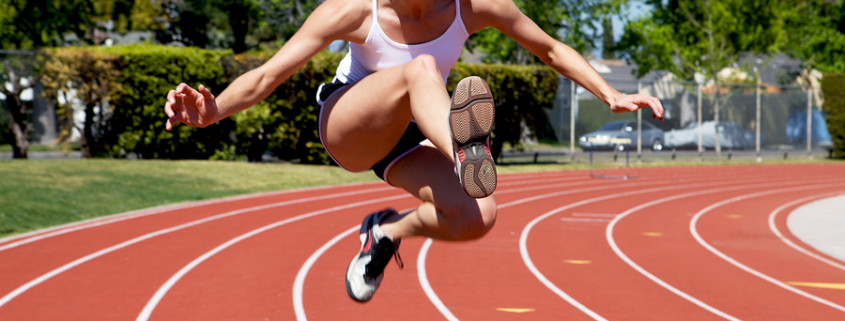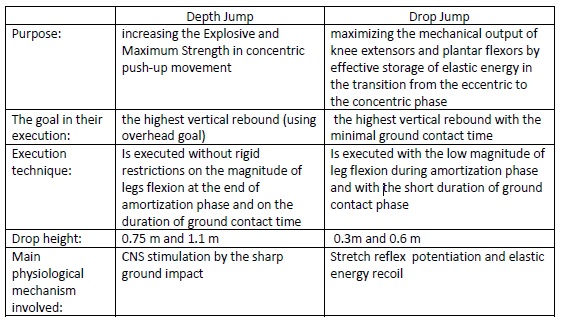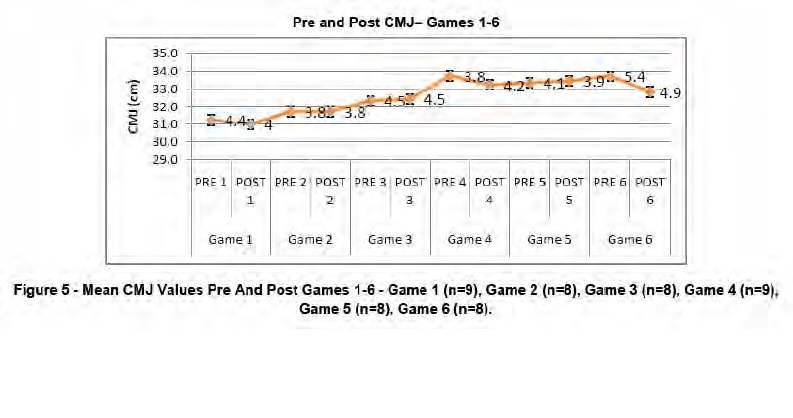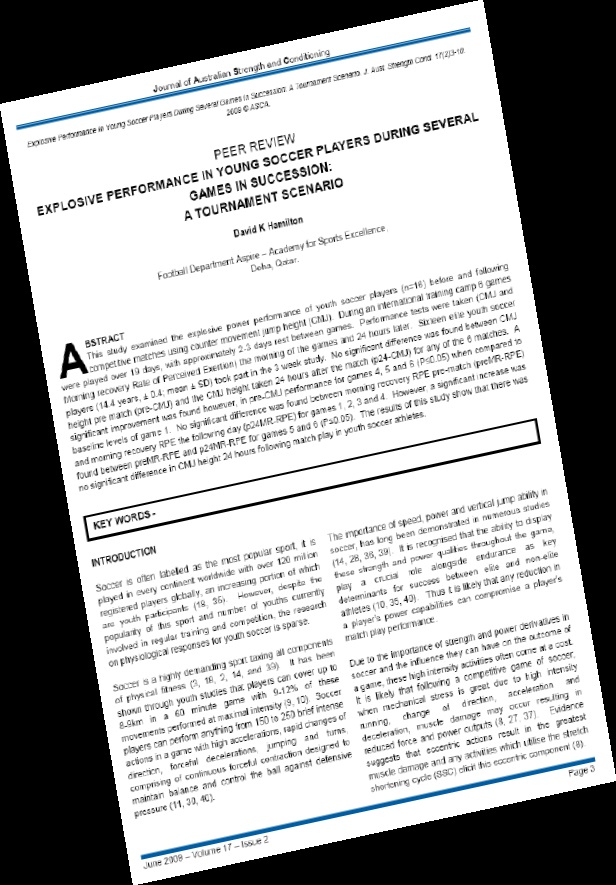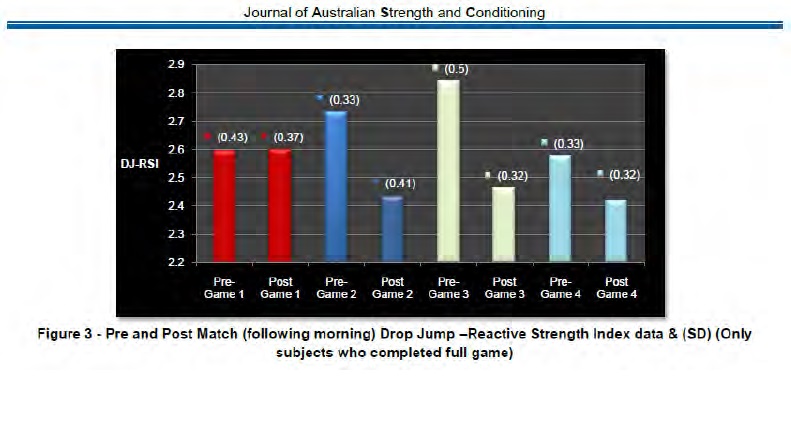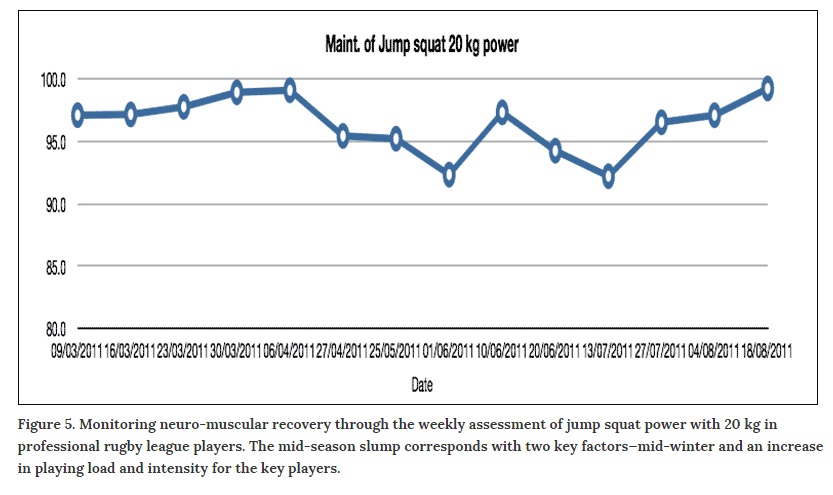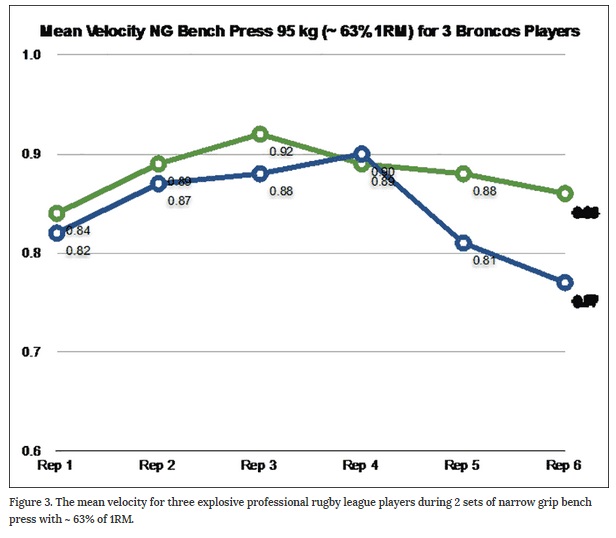Counter movement jump or Depth Jump- which is better?
For as long as I can remember I have used the standing vertical jump (SVJ) with an arm swing and a squat jump without an arm swing to measure power. I use the SVJ as a measure of performance first and as a measure of fatigue second.
However, I have always doubted the usefulness of the vertical jump score as a measure of physical preparedness from the point of view of neural fatigue. I have reconsidered some research and also found some new information. Below is some of my research.
The first part is based on experimental research conducted by Dave Hamilton, who presented his work with the Great Britain women’s hockey team in the three years of preparation for London 2012, at the UKSCA Conference.
The second part are some snippets of interviews that were conducted by Freelap USA during a round table on ‘Velocity Based training.’
Before we get into the findings it will be useful to clarify a few terms. For ease of understanding I will clarify the difference between a depth jump and a drop jump.
Depth jump vs. Drop Jump
In the use of Drop Jumps, there are some problematic issues. The first issue regards the danger of Drop Jump for the leg joints, especially if performed from a high drop height. In fact, the important condition for efficient recoil of the elastic energy is the muscle’s stiffness during the amortization phase. In order to assure this condition, Drop Jump should be performed with low level of leg flexion at the end of ground contact phase. However, if the athlete “drives as a stake” into the ground, with the straight legs, the ground impact is too hard for his leg joints. This opinion has been confirmed by many researchers (for example, by B.U. Newton, W.B. Young, W.J. Kraemer and C. Byrne, 2001)
To avoid the danger of sharp heel impact, it has been suggested to use Drop Jumps only with low drop heights of 20–40 cm (Bobbert et al., 1987; Lees & Fahmi, 1994). The problem is that the use of 30cm drop height is ineffective at increasing the rebound height: it could assure only decreasing ground contact duration (W.Taube et al., 2011).
Taken from Jump Training 101- Dr Natalia Verkhoshansky
I’ve selected the video below to stress the fact that there needs to be a certain level of athleticism required to safely execute a drop jump. The high levels of eccentric loading could cause significant stress to the knee joint if not adequately prepared. Note the knee valgus present.
Part 1:
Dave Hamilton-Drop jumps- Reactive Strength Index (RSI)- DJ-RSI
Dave spent the first year of his role understanding the demands of the full-time hockey programme. In his second year he focused on Monitoring:
His previous research with soccer players had shown that the counter movement jump (same as SVJ but without use of arm swing) didn’t show promise as a sensitive indicator of neural fatigue as indicated in the figure below.
Performance in the CMJ actually increased across six games. Several other researchers have supported this.
Use of the Drop jump with calculation the RSI showed more promise because as the Figure below highlights, his research showed there was a significant drop off between pre- and post-game scores.
My conclusion: I have concluded that a drop jump from 30cm will be a more sensitive marker of neural fatigue than a standing vertical jump
Part 2:
Freelap USA Round table: Velocity based training: for the Full article click HERE
Bryan Mann:
While the vertical jump used to be the gold standard for monitoring, it really isn’t any longer as it isn’t sensitive enough. Many things can confound the results. Using technology, we can look at multiple factors that go into the jump.
A podcast with Carl Valle—who is also on this roundtable—mentioned using 40kg as the load for the jumps. You are getting weekly longitudinal data and a small training effect. Squat jumps are ballistic in nature and thus have a very minor deceleration phase—if one exists at all. But what’s wrong with getting some ballistics in every week? Nothing. It is going to help improve the athlete’s RFD.
Whatever type of jump you do (countermovement or non-countermovement), be consistent. Do it on the same day or same phase of the week
Mladen Jovanovic:
To use jump training for estimating “readiness” or NMF (neuromuscular fatigue), one needs more sensitive tools and methods. Simple jump height will not do it because one can have high NMF and still perform countermovement jumps (CMJ) to the same height. What changes is the way that height is achieved, or the “process” behind the jump. Height is just an outcome. Please note that I am talking about estimating readiness and NMF is not a performance indicator.
I would also tend to agree that the more “reactive” the jump, the more it might tell you about NMF. Using 20kg CMJ might not be sensitive enough to estimate NMF since athletes can “grind” it through.
Modify the Long term approach
Speaking of using jump testing—or any other “readiness” estimate to individualize training—it shouldn’t happen acutely. In other words, we are looking for trends and creating a longer-term “prescriptive model” for an athlete based on reaction trends, rather than jumping on “red flags” to adjust daily workouts. So what if your HRV is lower by 10 than yesterday, or your jump power is lower by 5%? We need to rule out normal biological/measurement variability
Dan Baker:
When I worked with Olympic divers, we did squat jumps (no countermovement or arm swing), countermovement jumps (no arm swing), and a vertical jump with arm swing that mimicked a dive take-off (BVJ). The SJ and CMJ are just diagnostic tools to improve the most important, sport-relevant jump test, the BVJ. The SJ is thought to represent the contractile capabilities of the muscles. The difference between the SJ and the CMJ is the extent to which the stretch-shortening cycle contributes.
So, if there is very little difference between the two (say <10%), then the athlete needs more SSC-type training such as jumps, plyos, etc. If the difference is large (>20%), then they may need more basic strength work (squats, etc). This ratio will also reflect the recent training content. So if we concentrate on heavy squats and heavy jump squats for a month or two, the SJ may go from, say, 40 cm to 42 and the CMJ from 46 cm to 47 cm—the SSC augmentation decreases from 15% to 12%. But in following up that block with lighter, faster jumps, depth jumps and other plyos, the SJ may remain unchanged. But the CMJ may improve up to 50 cm and now the augmentation is 19%.

